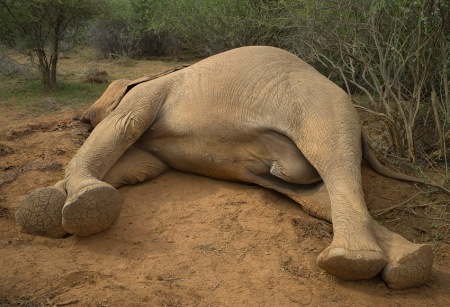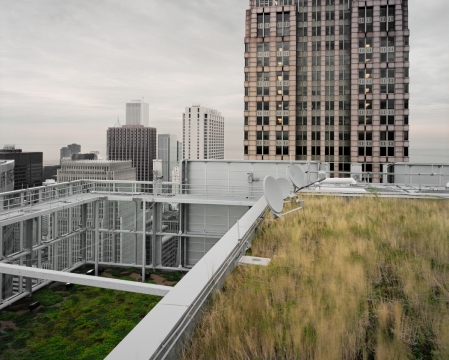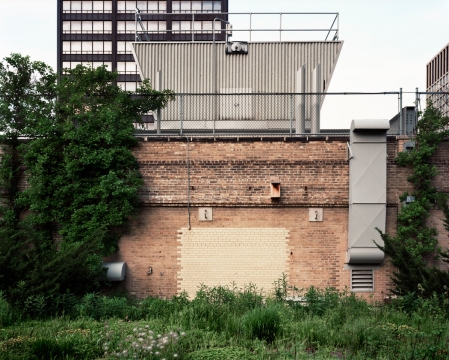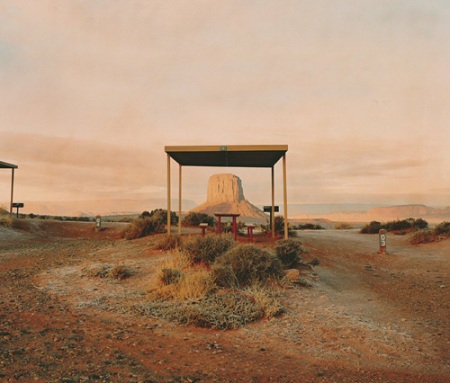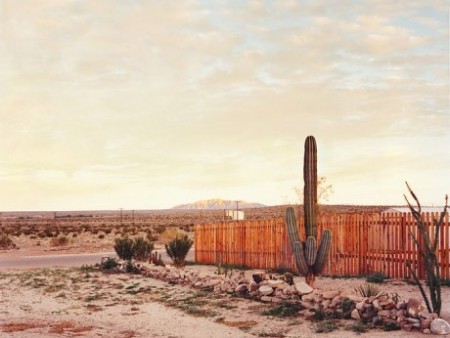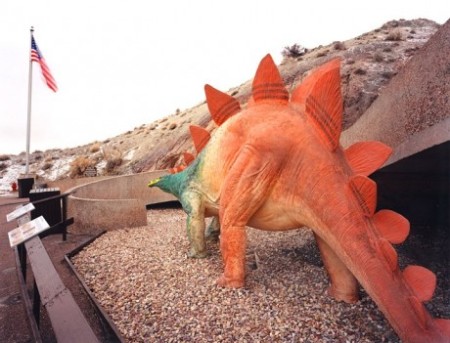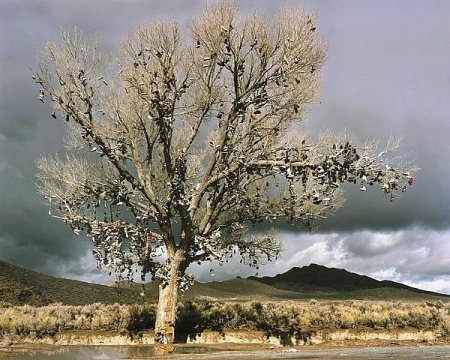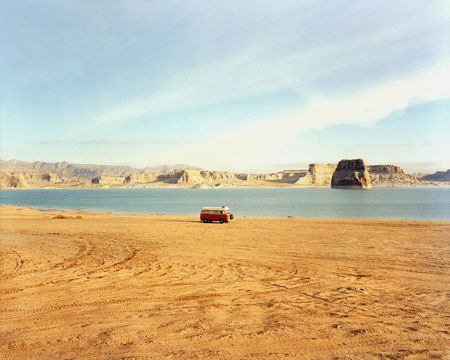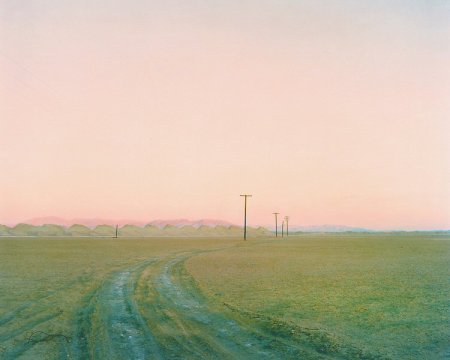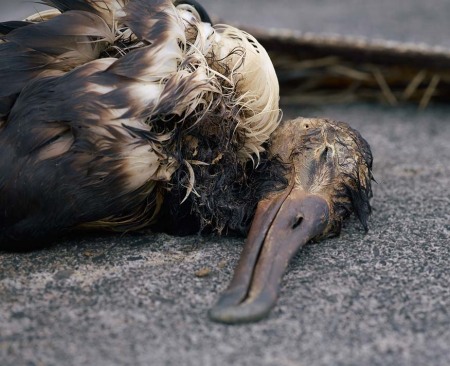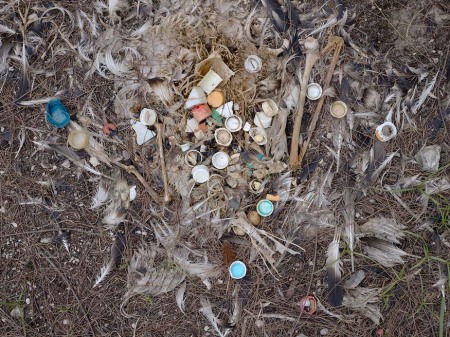Posts Tagged ‘environmental photographer.’
Yann Arthus-Bertrand captures fragile Earth in wide-angle
January 19, 2012Chris Jordan– Prix Pictet Commission– Ushirikiano
October 14, 2011This week, The 2010 Prix Pictet’s Commission was unveiled at Diemar/Noble Photography here in London. The gallery hosted the commissioned exhibition last year by Ed Kashi, which you can see here. This year features the body of work by environmental photographer Chris Jordan, documenting his field trip to Northern Kenya, specifically focusing on the horrors of elephant poaching.
CHRIS JORDAN – ARTIST’S STATEMENT
‘This year I was honoured to receive the Prix Pictet Commission, which took me on a thousand-mile behind-the-scenes photo documentary safari in Kenya’s northern rangelands. There I encountered a confederation of NGOs working closely with local indigenous tribes to create a sustainable way of life based on principles of environmental stewardship, wildlife conservation, and peace. Despite enormous adversity and the dubious intrusions of first-world religious, commercial, and educational culture, this quiet mini-revolution—led by a council of tribal elders—is bringing peace and stability to a huge area of Kenya. I found the process heartening, especially considering that it is happening in a resource-poor part of the world that is being ravaged by the effects of global climate change. Throughout our two-week expedition across a stunningly wild landscape, I found myself constantly humbled by the grace, dignity, and spirit of the ancient tribal people I had the privilege of encountering there. I hope my photographs convey a small fragment of the complex and inspiring story of Ushirikiano* that is emerging in this remote part of Africa.
The phenomenon of elephant poaching strikes me as profoundly symbolic. As the largest animal to walk the Earth, the elephant is one of our planet’s most sentient beings, with a brain about four times the size of ours, equal or greater in intelligence to dolphins and higher-order primates. Elephants are one of the few creatures who grieve their dead in community, and this kind of mourning is one of the characteristics that anthropologists use to define the line between early humans and pre-human apes. In my view, our elephant populations—along with the ecosystems they inhabit—should be revered and preserved as sacred planetary treasures. Hopefully these photos can serve as a visual reminder of the trail of destruction we leave, and the damage we do to our own spirits, when we forget our relationship with nature and our connection with the higher purposes of our life and our own human dignity.’
Prix Pictet Commission: Chris Jordan
Ushirikiano
Building a sustainable future in Kenya’s Northern Rangelands
Diemar /Noble Photography 66/67 Wells Street, London W1T 3PY 6 -29 October 2011
[*Ushirikiano: noun (Swahili): partnership, collaboration, or community of shared interest.]
To see more from this body of work, check out Chris’s website gallery here.
Brad Temkin
June 5, 2011Chicago based photographer Brad Temkin (American, b.1956) has been documenting the human impact on the contemporary landscape for over 30 years. He has exhibited his photographs throughout the United States and abroad. His work is part of several permanent collections including the Art Institute of Chicago, Milwaukee Art Museum, Corcoran Gallery of Art in Washington, D.C., Museum of Fine Arts, Houston, Akron Art Museum and Museum of Contemporary Photography among others. Temkin’s images have appeared in such publications as Aperture, Black & White Magazine, China Photo and European Photography. A monograph of Temkin’s work was published in 2005 entitled “Private Places: Photographs of Chicago Gardens”. Temkin currently teaches at Columbia College Chicago and teaches workshops in Ireland every year.
His new series titled Rooftop, Temkin documents the growing trend of green roofs and rooftop gardens all over the world. These large-format elevated landscapes serve as important markers of the cultural shift towards sustainable design. Daylight Magazine recently featured a podcast including commentary by the artist, an interview with Katherine Ware, Curator of Photography at the New Mexico Museum of Art, as well as examples of Temkin’s work. Check out the podcast here, and to view more of Temkin’s work from this series please visit his website.
Terry Falke
January 17, 2011I recently picked up Terry Falke’s Observations in an Occupied Wilderness at my local Powell’s bookstore here in Portland, Oregon, one of my many home towns. What a perfect place to find such a gem, Portland’s backyard is literally wilderness. Even the Portland metro area, starting with smack downtown, is home to some of the largest urban parks in the country, including remaining old growth forests. Strict urban sprawl restrictions during the environmental movement in the 60s has kept city limits restricted, and wild areas preserved. Portlanders and indeed Oregonians are an outdoorsy bunch, reveling in the wild that is their own backyard.
How had I not heard of Terry Falke before? To think that he walked in the steps of Robert Adams, one of my favorite landscape photographers, in initiating the most modern landscape movement, and here I was ignorant of his work. In a wonderful essay by Carol McCusker, Falke’s work is compared to that of the early environmentalists and conversations, both as the observation of beauty and plenitude in the landscape, as well as the fear of a dystopia that is all too real and possible. In Observations in an Occupied Wilderness, Falke travels around the American Southwest, his home turf, to bring us views and observations of several concerning juxtapositions; the grandiosity of the American western landscape coupled with our desire to “collect” it in the form of tourist viewing platforms, paved with concrete and lined with handrails. As the jacket so eloquently states, Falke photographs “the ‘improvements’ that position visitors within a landscape while simultaneously disconnecting them from it.”
The photographs are beautiful, quiet, eerie, yet not scary. They are a very subtle interpretation of man’s need to control nature, tame it, collect it, present it, and even replicate it. For more information and work by Terry Falke, visit AfterImageGallery here.
ECOAESTHETIC: The Tragedy of Beauty
June 15, 2010ECOAESTHETIC is an annual summer experience of environmental issues affecting our visual world and spiritual selves through exhibitions and special events.
ECOAESTHETIC: The Tragedy of Beauty is the first exhibition of SEA to be mounted in Exit Art’s main gallery. In keeping with SEA’s mission to present artworks that address socio-environmental concerns – and to unite artists, scholars, scientists and the public in discussion on these issues –ECOAESTHETIC will establish a summer encounter of social and environmental projects. Through the work of nine international photographers, it approaches the mystery of beauty in the natural and built environment, which can be destructive or utopian.
The Tragedy of Beauty will focus on photography of land where the tragedy of the image becomes the aesthetic of the environment. The artists in this exhibition do not have a passive engagement with the environment; rather, they seek out beautiful and tragic images to emphasize the human impact on fragile ecosystems, to elucidate our relationship to nature, and to visualize the violence of natural disasters. The purpose of The Tragedy of Beauty is to demonstrate that global environmental struggles are creating an aesthetic.
In conjunction with The Tragedy of Beauty, Exit Art will also create a collective terrarium in its two ground floor windows facing 36th Street and 10th Avenue. For this project, the public has been invited to bring a plant and a photo of themselves with the plant to Exit Art, in order to contribute to a communal garden that gives a presence to the local environmental movement.
Curated by Papo Colo, Jeanette Ingberman, Lauren Rosati and Herb Tam.
ARTISTS:
Edward Burtynsky (Canada); Mitch Epstein (USA); Anthony Hamboussi (USA); Chris Jordan (USA); Christopher LaMarca (USA); Sze Tsung Leong (USA); David Maisel (USA); Susannah Sayler/The Canary Project (USA); Jo Syz (UK)
Exit Art
475 Tenth Ave
New York, NY 10018
T. 212 966 7745
F. 212 925 2928
E. info@exitart.org
Gallery Hours:
Tuesday – Thursday 10:00am – 6:00pm
Friday 10:00am – 8:00pm
Saturday 12:00pm – 8:00pm
Opening Reception: Friday June 16, 2010, 7-10 pm.
Dates of Exhibition: June 18 – August 18, 2010.
Ed Kashi: Madagascar, A Land Out of Balance
May 4, 2010Each year the Prix Pictet commissions one of its short listed photographers to produce a body of work based on a region where Pictet & Cie is supporting a sustainability program. In 2009, Ed Kashi won the honors of this commission, taking him to Madagascar in connection with a UK Charity titled Azafady helping the poorest communities in Madagascar develop sustainable ways of living. I recently visited the Diemar/Noble Gallery here in London on Well St. only a couple of days after the opening reception and general huge bash for unveiling of this series of images. As much as I love a party, it’s really difficult to see the work in its entirety at an opening, with people and drinks always in the way.
Madagascar is one of the richest nations in the world when it comes to biodiversity. Yet it is simultaneously one of the poorest, with poverty and unsustainability reeking havoc on the land and people. Ed Kashi is an award winning photojournalist well known for his work dedicated to documenting the social and political issues of our times, recently and specifically about environmental degradation as it affects the state of humanity and the world. Kashi traveled to Madagascar in January of this year to document the ongoing destruction of the forest, the increasing desertification of once lush habitat, and the plight of the people as they fall ever deeper into a state of poverty as a result of dramatic unsustainable development. The party charity organization, Azafady, is working with some of the poorest communities in developing sustainable ways of living through promoting local forest management solutions and engaging people in planning, implementation and monitoring activities, and reducing forest dependence and depletion of forest resources. Kashi writes, “This Commission for the Prix Pictet is in direct response to the global cry to stop and take responsibility, seen through the dignified and vibrant people of south east Madagascar.”
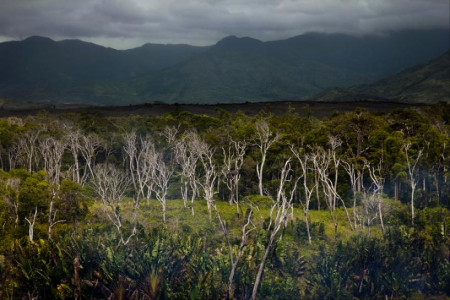
The illegal practice of tavy, or slash and burn agriculture, is one of the most urgent threats to Madagascar's people and forests. As farmers search for fertile land in which to plan their crops, the forest is destroyed and a life-saving resource for Madagascar's rural poor is lost.
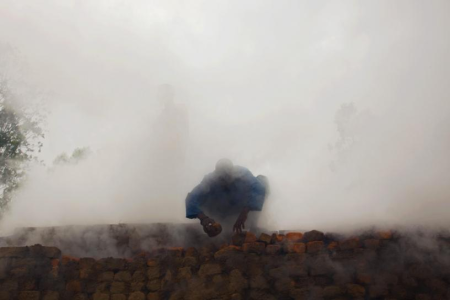
Men work on a brick kiln in Anosibe. This is a very inefficient use of wood, which is the main source of fuel for burning the clay to make the bricks.
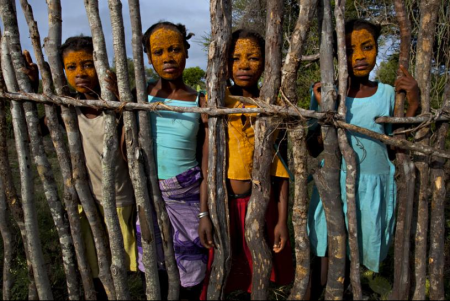
These young girls, ages 11-13, use a paste made from the tsiambara plant's roots to beautify their skin. They usually leave it on for 5 days and keep on redoing the process except on market days. The meaning of this process is called "I don't want to show you".
For further info and plenty more images, please visit Diemar/Noble, Prix Pictet, or Ed Kashi’s website’s directly.
While I realize that this specific exhibition would be documentary in nature due to both Kashi’s work and the nature of the commission, regardless of this I am still aware that there is a crossover between social documentary and fine art that’s taking place in the art world. This was a fine example. Diemar/Noble specializes in fine art photography, generally large scale in both the process and presentation, and using materials around since relatively early on in the medium’s history. I’m not saying you can’t be a fine art photographer if you don’t shoot 8×10 negatives. However, it is becoming more and more clear that the well known gap between photojournalists who are harnessing the power of images to deliver news and events of the moment (these days with 35mm digital cameras), and fine art photographers exploring abstract ideas through visual imagery using the camera as their tool (large format film), is closing. Or at least lessening in its size. This blog could sometimes be seen as an example of that. Although I set out initially to cover fine art photographers and keep the focus very much in the art world, I’m finding it hard to exclude some documentary and reportage photographers simply because of style. Surely it should be the content, intention, and success their images have on sending messages regarding the environment and related issues. But why is it then we regard photographs in a newspaper in a different light than if those same photographs were viewed in a gallery?
Context, social pretense, and the idea of the gallery or museum as the ultimate authority on art could a handful of reasons. A photograph changes from being a document to something more expressive when taken from the front page to a gallery wall. The photograph itself however doesn’t change. The technical elements of a photograph, its actual physical appearance, none of that changes. Instead, it is our interpretation of it. And yet, when I look at a photograph I usually instantly categorize it as one or the other. I am still intrinsically aware of stylistic differences in the photographer’s approach. What do you think? Do you think it’s fair that this line of separation is drawn and has been kept apart for quite some time? I welcome your thoughts in the comments section.
Nadav Kander Discussion in London Feb 2nd
February 1, 2010This year’s Prix Pictet winner, photographer Nadav Kander will be joining Bronac Ferran, RCA IDE Senior Research Tutor and Yanki Lee Curator of the Constant Stream Exhibitions in conversation . Kander will discuss his works and reflect on his China experience. It will be an exceptional opportunity to hear one of the world’s leading photographers talk about his work.
6.45pm in Lecture Theatre 1Chris Jordan– Midway
November 30, 2009The Great Pacific Garbage Patch within the North Pacific Gyre, is now twice the size of Texas, and still many people are not yet aware of it. The patch is a result of marine pollution such as dumping from large ships, as well as every day litter on beaches and coast. But most of it, believe it or not, is garbage that has been blown by wind off of land. In fact, an estimated 80% of the garbage in the patch comes from land based sources, whereas only 20% comes from ships. What exactly is in the patch? Plastic. The answer is always plastic. Plastic is a synthetic material invented by man that never degrades. Some love it just for that reason.
Unfortunately, this is plastic’s biggest fault. Our culture of disposable plastics like bottled water, packaging, grocery bags, single serving containers, etc. has not yet replaced “real plastic” with green biodegradable versions. Plastic does not biodegrade, it just photo degrades, meaning that it breaks down visually until it becomes so small and invisible while still maintaining its toxic molecular structure that it makes its way into the food source of the smallest of aquatic organisms– plankton. The key to life in the oceans. Plankton is the most abundant life form on earth, and now in the plastic gyre, it is found only 1 to each 7 pieces of floating plastic.
This isn’t the only organism to ingest our plastic waste– sea turtles, fish, jelly fish, and others– are all known to have mistaken brightly colored bits of plastic as food. Not only is the plastic non-ingestible and can do all sorts of harm to their stomachs and throats (imagine swallowing a frisbee every day), but plastic contains a host of toxic chemicals like cancer causing BPA (bisphenol A) and Polysterene (which contains poisons like flame retardants and benzene, known carcinogens). The plastic also absorbs other organic pollutants in the water like DDT (the banned pesticide), PCBs (polychlorinated biphenyls) and others which are known as endocrine disrupters, meaning that they alter the levels and state of hormones of the animals that ingest them. And this isn’t just about the fish turning androgynous– the humans like us that eat them can be greatly affected too. All those warnings about women eating fish during pregnancy? They’re not only because of mercury content, but also because of toxic chemicals that have been absorbed by sealife through the ingestion of plastics which have in turn absorbed these chemicals.
One of the animals most greatly affected is the Albatross. This starring character from Coleridge’s The Rhyme of the Ancient Mariner is severely threatened by our current consumptive habits. Specifically, the Black Footed Albatross and Laysan Albatross, who make their home on isolated tropical islands in the North Pacific Gyre, are currently considered an endangered species. Not only are they accidentally caught by longline fishing, but they are prone to eating the colorful pieces of floating plastic that resemble food in the garbage patch. The plastic causes all sorts of havoc in their stomachs, and leaves them full with less room for real food. Parents of albatross chics bring these plastic bits resembling food back to their hungry chics, who’s stomachs fill up too quickly with poisons and in-digestible materials. They barely make it a few months on this diet.
Chris Jordan, a photographer that deals with ideas surrounding America’s vast consumption habits and its resulting consequences, took a trip out to the Pacific Gyre and Garbage patch and found a gut wrenching subject for a new body of work. The stomach of baby albatross chics. What he found was truly shocking and horrific, even unbelievable. But believe it. This is photography in the classical sense in that he is photographing what already exists in front of him without additional creation or manipulation.
“These photographs of albatross chicks were made just a few weeks ago on Midway Atoll, a tiny stretch of sand and coral near the middle of the North Pacific. The nesting babies are fed bellies-full of plastic by their parents, who soar out over the vast polluted ocean collecting what looks to them like food to bring back to their young. On this diet of human trash, every year tens of thousands of albatross chicks die on Midway from starvation, toxicity, and choking.”
“To document this phenomenon as faithfully as possible, not a single piece of plastic in any of these photographs was moved, placed, manipulated, arranged, or altered in any way. These images depict the actual stomach contents of baby birds in one of the world’s most remote marine sanctuaries, more than 2000 miles from the nearest continent.”
The images are straight-forward in their approach, photographed from a similar vantage point and distance, leaving the viewer with nowhere to go but facing the reality of what he’s setting in front of them. Various states of death and decay are portrayed, from some birds that seem fairly in tact, like their death might have occured just a few days ago, to others that are merely a pile of bones. However, it becomes clear right away the message and purpose of the photographs. Chris is clearly highlighting the contents of these baby chics’ stomachs– plastic. The closer and longer you look, the more you can identify. Fishing line is prevalent, as are hundreds of bottle caps, can openers, cigarette lighters, stuff you wouldn’t imagine. If humans ate these things on a daily basis we would suffer a great deal. Now imagine a baby bird, a fraction of our size, eating the same thing. Eating our garbage which it mistakes as food. Why are we using a material that is meant to last forever to make things designed to be used for only a few seconds and then tossed away?
There is a desperation apparent in these pictures. It is the result of the death and decay in the photographs, but also in the feelings of disgust and horror the viewer is experiencing. Chris is showing us the direct result of our habits. He is making the clear connection between society’s consumptive and wasteful habits and the consequences of that. He is showing us that our garbage doesn’t just disappear at night never to be thought of again. That is has dire consequences, and not just for an animal thousands of miles away, but also closer to home, in the food that we eat and the ocean in which we swim. We have altered the composition of the ocean forever. Now, every sample of water or sand from anywhere in the world, contains plastic. Is this the world we want to leave for our children and our grandchildren?
If you’d like to hear Chris talk about the ethics involved in photographing these birds (ie. no plastic was added or moved in the process), you can do so via this 2 minute clip on vimeo. And to see more of his work, please visit his website.
Edward Burtynsky’s “Oil” at Hasted Hunt Kraeutler
November 20, 2009
SOCAR Oil Fields #6, Baku, Azerbaijan, 2006 Digital Chromogenic Color Print 48 x 72" ed of 6 © Edward Burtynsky, courtesy of HASTED HUNT KRAEUTLER, NYC / Nicholas Metivier Gallery, Toronto.
Upon heading to Burtynsky’s gallery here in NYC, Charles Cowles, to check out his latest show, “Oil”, I realized something was off. I was no longer in Charles Cowles. I then heard a familiar voice in the back of the gallery, and lo and behold, it was of Bill Hunt, the former photo director of Hasted/Hunt , and prior to that, Ricco/Maresca, where I worked a few years ago. Bill and Sarah (Sarah is the Hasted part of the equation), went off on their own a few years ago, and more recently, joined forces with Joseph Kraeutler in taking over Charles Cowles former space on 24th St. in Chelsea after he retired. They also took over Burtynsky’s exclusive NY representation. “Oil”, showing simultaneously at the Corcoran Gallery of Art in Washington DC as well as Nicholas Metivier Gallery in Toronto from where Burtynsky hails, is a long-term project based over the past 12 years during which Burtynsky followed the oil industry all over the world.

Oil Fields #19a, Belridge, California, USA, 2003 Digital Chromogenic Color Print 35.5 x 77.5" ed of 10 © Edward Burtynsky, courtesy of HASTED HUNT KRAEUTLER, NYC / Nicholas Metivier Gallery, Toronto.
Russia, California, Detroit, Texas, the Middle East, Canada… are just a few of the locations Burtynsky traveled to in search for evidence of the industry that has shaped our society, economy, and way of life for the past 100 years. An industry which must change, or we will suffer the consequences, as we have already seen begin. The work is in traditional Burtynsky style– very large prints, shot mostly from above, and with the vantage point of monumental scale that we sometimes take for granted. Burtynsky is truly connecting our every day lives– our SUVs, plastic packaging, single use/single serving society– with what that means and looks like from start to finish, from extraction to consumption. From the vast views of Los Angeles oil fields to the overhead shot of its freeways, he is directly relating cause and effect, decision and consequence, origin and destination.

Highway #5, Los Angeles, California, USA, 2009 Digital Chromogenic Color Print 60 x 75" ed of 3 © Edward Burtynsky, courtesy of HASTED HUNT KRAEUTLER, NYC / Nicholas Metivier Gallery, Toronto.
The images are all gorgeous, despite levels of disgust at realization of what we’re looking at, many shot during the magic hour and printed with beautiful subtle tones and colors, bringing the viewer into an appreciation of the inherent beauty of the prints and images, while simultaneously showing us what we have done to our landscape and environment with no holds barred.

Jet Engines, Tucson, Arizona 2006 Digital Chromogenic Color Print © Edward Burtynsky, courtesy of HASTED HUNT KRAEUTLER, NYC / Nicholas Metivier Gallery, Toronto.
“Oil” is on view through November 28th at Hasted Hunt Kraeutler at 537 W. 24th St. New York, NY 10011. And if you’re in DC, be sure to check out the simultaneous show at The Corcoran exhibiting a massive 60 prints from this series. In addition, a new book, Burtynsky’s fourth, titled “Edward Burtynsky: Oil” has just been published by Steidl. Purchase it here. To preview the images in the book simply view the amazing amount of work Burtynsky has dedicated to the subject of oil on his website.
Nicholas Hughes: In Darkness Visible, Verse 1
September 27, 2009Apologies for the gap in posting, as I’ve been abroad for several weeks, mostly off the grid. During the time on the grid however, I spent a few days in London, on one of which I visited the V+A, the Victoria and Albert Museum. A fantastic design museum from past to present, I was there at the peak of London’s Design Week, and therefore was lucky enough to see several new contemporary and modern exhibitions. I also visited the V+A’s permanent photography collection, which houses a large number of greats whom I admire, along with others I wasn’t as familiar with. An eery image of tree limbs floating in the gloomy mist was one of these.
A UK born and based artist interested in environmentalism from an early age, Nicholas Hughes brings the natural world into his photography as a central subject. In his series titled “In Darkness Visible, Verse 1”, Hughes points his large format view camera at trees that inhabit urban parks in central London, a city of 8 million people. Layering exposures of tree limbs during what appears to be foggy winter nights, Hughes recreates possible glimpses into ancient primeval forests, maybe even like the Belavezhskaya Pushcha, on the borders of Poland and Belarus, the last European primeval forest in existence, currently a UNESCO World Heritage Site.
The images are dark, moody, and melancholy. They are also contemplative, in the sense that they weren’t all taken in an ancient forest, but instead, in London’s manufactured green spaces. This idea of wilderness amongst the built environment has always been an essential part of environmentalism. While we truly can not have wild and built coexisting freely, as they are polar opposites, we do not stop trying to incorporate wild elements into our built environment, consistently trying to tame and control that wilderness. Nature of course plays this same game with us as well, in that it uses every opportunity to grow and expand and even encroach wherever it can, sometimes wiping the slate clean altogether as can occur with large natural disasters. It is an ongoing battle that must never be won by either side, but instead, reach a harmonious mutual dependency and equal levels of respect. Whether that is a reality we will see achieved in our lifetime has yet to become clear.
In the meantime, these images bring us to question our relationship with nature, and more specifically, the meaning of nature and wilderness in this modern urban context. We describe small parks as being a part of nature, larger parks as being wild space, yet neither of these terms are accurate. Are we so far from recognizing that we—ourselves– are a part of nature that we now make drawn this distinct line of separation? I see Hughes photographs speaking of beauty, sadness, strangeness even. But I also see them speaking of the fragility inherent in this distinction and separation we have put between ourselves and the natural world. If that separation continues to grow, we have yet to imagine the worst. If we again begin to think of ourselves as a part of nature, with similar importance, and as an integral part of a natural cycle to which we play a huge part (and are no longer contributing our fair share), we can possibly only then begin to come up with realistic and effective solutions to our current environmental crisis. In this way, they are truly haunting in ways other than aesthetically speaking.
Hughes describes the work as such:
“In reaction to media led sensory anaesthetisation, and wearied by empty political rhetoric, my aim was to construct a forest built from accumulated memory and the ghosts of trees. Spending a period of two winters’ visiting public spaces in central London, this work inverts decorative Arcadian layout in an attempt to restore a sense of the natural in the cultivated, somewhat synthetic city ‘wilderness’ spaces.”
To see more of Hughes’ work, please visit his website www.nicholas-hughes.net or his galleries in London and New York.


